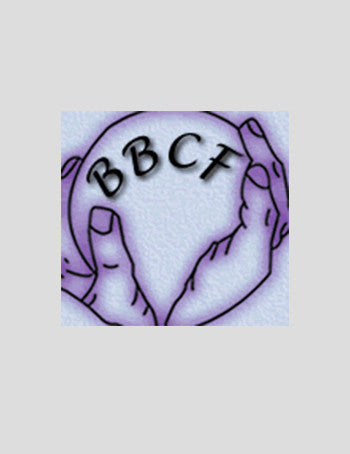
JORDAN TIMES
A Feast for the Eyes
A rainbow of colour, a wealth of information, centuries of traditions and skill, but above all, a precious point of reference for any serious ethnologist or historian - all in one book, product of “a young, privileged woman just out of school” who witnessed the birth of Israel “in our very midst” and grew up “resisting” it in a most humane and appealing manner: collecting, to “salvage”, Palestinian costumes.
The Widad Kawar Collection, “the largest to date of Palestinian, Jordanian and other Arab traditional dress and accessories, comprising more than 3,000 items”, accumulated over 50 years, interweaving objects and life, preserving alive both heritage and life stories. With each item, the author recalls “a family, a house, a village, a town, a field, a market. Each item was worn on special occasions, happy and sad, that marked the owner’s life”.
The narratives of women “whose embroidery and dress-making skills I so admire” provide testimonies that are “a contribution to oral history, augmenting standard historical accounts”.
With a touching introduction by the author and page after page of riveting autobiography, history, portrayal of daily life - detailed, endearing but above all informative - description of the products in the collection and an assortment of photos - of families, individuals, jewellery, pottery, paintings, dresses - the book is a treasure to be jealously guarded.
It makes subtle, thus all the more powerful, statements.
“My collection is more than a statement of indignation at how the world continues to ignore the Palestinian people’s rights and distorts Arab culture. My aim is to capture the complexity of Palestinian society through these personal histories and bitter-sweet memories of the women who owned the dresses,” states Kawar in the introduction.
Born in Tulkarem, in the Nablus area, to Jalil Irani and Hanneh Daoud, “the only daughter of five children”, she, like her brothers, attended Quaker schools in Brummana, Lebanon, and Ramallah. Moving from Tulkarem to Brummana, the family then settled in Bethlehem in 1941, where Widad and her younger brother attended the Swedish school in the Musrara quarter of Jerusalem.
Those were peaceful times and in Bethlehem, “the fashion and weaving centre for many villagers in different parts of the country - the Paris of central Palestine”, the souk “catered to all the items needed for village costumes…. In every house that I entered, I would see a woman embroidering, for her own use or for the market”.
The idyllic atmosphere of the city and life of its inhabitants make for very interesting reading, give a profusion of information about weaving, embroidery, market habits and political developments.
Slowly the air changes, though; the Zionist presence makes itself felt and threatening, but the story of heritage making continues, interspersed with political views, each supporting and validating the other.
The author often visits Aboud, her mother’s village in the Ramallah area whose 3,500 population in 1948 was half Christian half Muslim, and which assumes historical significance when reading by the comments of political thinker, columnist and writer Israel Shamir in an article protesting the destruction of the village’s olive groves (a practice, one discovers, with deep historical roots): “It is a good place to understand the complete lunacy of the prevailing Jewish narrative, of the ‘land without people’ sparsely inhabited by the Arab nomads who came in the 7th century. Archaeologists proved this village was never destroyed or abandoned since time immemorial…”
Between Palestinian towns and Amman, where she married Kamel Kawar in 1956, the author’s story is further knitted and the reader finds out about old neighbourhoods and families in our capital, about the collection growing because of the author’s love for this part of heritage and the “difficult economic conditions” in villages around Bethlehem and Ramallah, which “were forcing people to sell their cherished costumes”.
Of these, the “thob” (dress), in particular, “is a vivid symbol of the vibrant society and culture that prevailed in Palestine until the violent uprooting of its people. It attests to the Palestinians’ determination to sustain their national identity and their hopes for the restoration of their rights”.
Kawar finds it imperative to document and preserve Arab traditional heritage “in view of Israel’s appropriation of elements of our culture, and the many misrepresentations of Arab society that prevail in Western countries”.
The map of Palestine, with towns and villages dotted around bigger cities, shows not only the extent to which this land was populated by Palestinians but also the collector’s riches and thoroughness. No human settlement is left out, and photos of sophisticated women in richly embroidered wedding dresses sit side by side with those of tattooed Bedouin women displaying equally proud their attire.
The women’s stories are as varied, arousing the widest gamut of feelings and providing as much information. Terminology is learned - deyal, jellayeh, tubsi, shinyar, raymah, znag, malaki, khirqa - amulets, coins, jewellery are depicted in detail, lives pass in front of our eye, traditions are explained, and historical accounts and books are mentioned, making reading fascinating and instructive.
“My collection and this book reflect not only my passion for preserving the past, but also my firm belief that heritage matters for the future. It defines the roots of our identity. With each generation, society changes and new customs blend with established ones, creating new traditions and redefining our sense of who we are. So while my collection records my personal perception of contemporary history, I hope it will become a source for my children, their children and future generations. For if we connect with our past, we are better able to create our future.”


